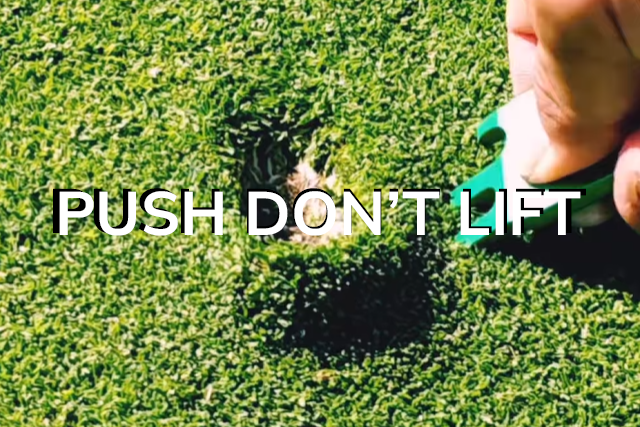Golf is a game of skill, precision, and strategy, where even the smallest details can have a significant impact on the game's outcome. One such detail that often challenges golfers of all levels is the condition of the green, particularly when it's bumpy. In this short blog article, we'll explore how a bumpy green can affect your putts, what you can do to mitigate these challenges, and the crucial role of repairing ball marks.
The Impact of a Bumpy Green
On a bumpy green, the ball can deviate from its intended line due to the uneven surface, making it challenging to gauge the right direction and speed for your putt. Bumps and irregularities add complexity, making it harder to predict how the ball will move, especially over longer distances. Controlling the speed of your putt is crucial on a bumpy green, as a ball hit too hard can bounce unpredictably. Dealing with the inconsistencies of a bumpy green can be frustrating and mentally taxing, affecting your putting performance.
The Importance of Repairing Ball Marks
An often overlooked aspect of maintaining smooth greens is the golfer's responsibility to repair ball marks. When a golf ball lands on the green, it can create a small crater or indentation, known as a ball mark. These marks, if left unrepaired, can lead to bumpy and uneven surfaces, exacerbating the challenges mentioned above. Every golfer, regardless of their skill level, should make it a habit to repair their ball marks. Doing so helps preserve the quality of the green for everyone. Smooth greens not only provide a better playing experience but also reflect well on the golf course's maintenance standards.
To make this task easier and more efficient, consider using a specialized tool like the 6-in-1 Divot Tool from Birdicorn. This handy gadget not only helps in repairing ball marks but also serves multiple functions, making it a valuable addition to any golfer's kit.
Strategies for Putting on Bumpy Greens
Adapt to different conditions by practicing on various types of greens. A smooth and consistent stroke can help mitigate the unpredictability caused by the bumps. Aim slightly differently and play for a firmer putt to overcome minor surface irregularities. Accept that bumpy greens are part of the game and maintain a positive attitude.
Conclusion
While a bumpy green can add difficulty to your putting game, understanding the challenges and adopting appropriate strategies can minimize its impact. Equally important is the golfer's role in maintaining the green's condition by repairing ball marks. Remember, golf is about adapting and excelling in whatever conditions the course presents, and every player has a part to play in maintaining the quality of the game.




Leave a comment
All comments are moderated before being published.
This site is protected by hCaptcha and the hCaptcha Privacy Policy and Terms of Service apply.